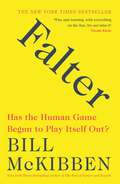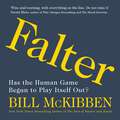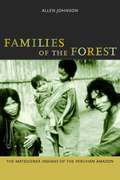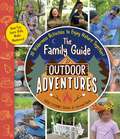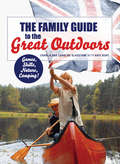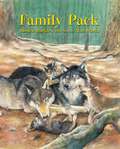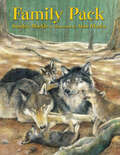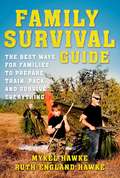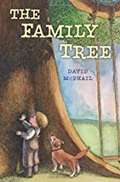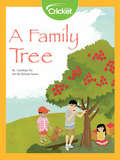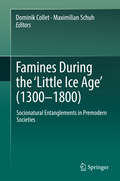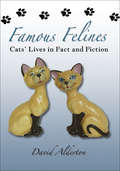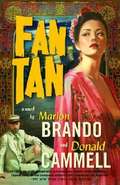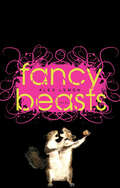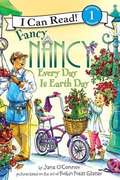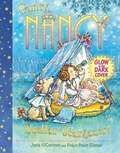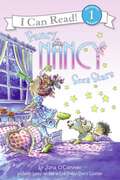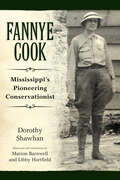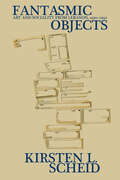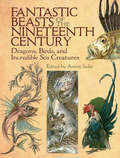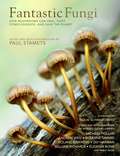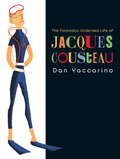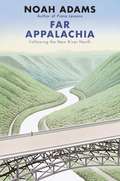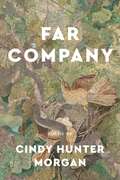- Table View
- List View
Falter: Has the Human Game Begun to Play Itself Out?
by Bill McKibben'This is Bill McKibben at his glorious best. Wise and warning, with everything on the line. Do not miss it' Naomi Klein, author of This Changes Everything and The Shock DoctrineThirty years ago, Bill McKibben wrote The End of Nature, the first book that alerted us to the dangers of climate change. Falter is a new call to arms, to save not only our planet but our very souls as well.Over tens of thousands of years, through the harnessing of nature, the development of civilization, and the application of new technologies, human beings have created the world we live in. But as McKibben points out in this provocative and sobering look at the world today, we are fast approaching a tipping point, putting into question the viability of humanity itself.McKibben argues that we have failed to recognize how individual actions often operated against our collective interest, and as a result we now face three daunting challenges - to adjust to a new life on a broken planet, to fight the hyper-individualism that now animates government and business; and to reverse the ways that technology is bleaching out the variety of human existence. He asks if we still retain the tools and social capital to fight these larger forces - and if we are willing to make the effort.
Falter: Has the Human Game Begun to Play Itself Out?
by Bill McKibben'This is Bill McKibben at his glorious best. Wise and warning, with everything on the line. Do not miss it' Naomi Klein, author of This Changes Everything and The Shock DoctrineThirty years ago, Bill McKibben wrote The End of Nature, the first book that alerted us to the dangers of climate change. Falter is a new call to arms, to save not only our planet but our very souls as well.Over tens of thousands of years, through the harnessing of nature, the development of civilization, and the application of new technologies, human beings have created the world we live in. But as McKibben points out in this provocative and sobering look at the world today, we are fast approaching a tipping point, putting into question the viability of humanity itself.McKibben argues that we have failed to recognize how individual actions often operated against our collective interest, and as a result we now face three daunting challenges - to adjust to a new life on a broken planet, to fight the hyper-individualism that now animates government and business; and to reverse the ways that technology is bleaching out the variety of human existence. He asks if we still retain the tools and social capital to fight these larger forces - and if we are willing to make the effort.(P)2019 Macmillan Audio
Familiar Trees of North America: Eastern Region (Audubon Society Pocket Guides)
by National Audubon Society StaffTrees are our largest and most conspicuous plants, a dominant part of nearly every landscape. Learning to identify trees will not only add to your appreciation of the American countryside, but will also serve as a good introduction to other aspects of nature, since trees usually have a great influence on the kinds of birds, wildflowers, mammals, and other wildlife in an area.
Families of the Forest: The Matsigenka Indians of the Peruvian Amazon
by Allen W. JohnsonAn ethnographic account of how and why a native American people live in autonomous, self-sufficient family groups along the Amazon fringe in the foothills of the Peruvian Andes.
The Family Guide to Outdoor Adventures: 30 Wilderness Activities to Enjoy Nature Together!
by Creek StewartExplore and experience nature with your kids with these 30 fun and educational family activities dedicated to spending more time outside.Less screen, more green! In the world of smartphones, tablets, and online learning, the need for children to engage with nature has never been more evident. Outdoor activities and projects inspire exploration, creativity, curiosity, learning, and a sense of wonder. Interacting with nature also fosters a healthy love and respect for the outdoors. The Family Guide to Outdoor Adventures features fun and engaging hands-on nature, camping, and bushcraft projects that get you and your children outside having more fun, strengthening your bond, and creating memories that will last a lifetime. Written by expert survival instructor Creek Stewart, each project is designed to get parents and their kids outside and teach them about nature and the great outdoors. From casting animal tracks and dyeing t-shirts with walnuts to building a debris hut and catching minnows with a spider web your family with get your hands dirty, learn some cool nature facts, and complete some awesome projects with your family. Explore, create, laugh, love, and experience the great outdoors together with The Family Guide to Outdoor Adventures.
The Family Guide to the Great Outdoors
by Charlie GladstoneGetting outdoors brings the whole family together. You’ll learn skills, have a run-around, share laughs, and make enduring memories.This book is the perfect companion to any outdoor family adventure. From countryside camping holidays to weekends roaming fields and parks, it will inspire you to enjoy the outdoors whatever the weather. It covers everything for kids (and big kids) to do outdoors, including:- Cloud identification- Great British walks- Building dams and dens- Campfires and woods- Camping recipes- Common British trees
Family Pack
by Sandra MarkleThrough the shadows of snow-frosted trees, a young female gray wolf lopes. She is new to this place--to Yellowstone. Gray wolves haven't lived here in seventy years. This female is alone, without the comfort of her mother or other wolves. As the seasons change and the young female grows, she must learn to feed, to hunt, and to survive in her new home. She must make her own family pack.
Family Pack
by Sandra MarkleA real-life story of adaptation and survival. Acclaimed science writer Sandra Markle and celebrated artist Alan Marks team up for the fifth time in this fascinating real-life story of a wolf and her pack. Years ago, an effort had been made to eliminate wolves from Yellowstone National Park. Recently, conservationists decided to reintroduce the animal to the area, relocating wolves from Canada. Family Pack introduces readers to Female 7 and Male 2, the founders of the Leopold wolf pack—the first naturally formed pack after the relocation effort. Readers follow Female 7 as she sets out on her own upon her release to the 2.2-million-acre area that is Yellowstone. Without the comfort of her mother or other wolves, the young female grows and learns to feed, hunt, and survive in her new home. Eventually, she crosses paths with Male 2, and the wolves form a family of their own. Back matter includes more information about wolves, a bibliography, and an author’s note about the Leopold pack and the importance of reintroducing wolves to Yellowstone, restoring the natural balance.
Family Survival Guide: The Best Ways for Families to Prepare, Train, Pack, and Survive Everything
by Mykel Hawke Ruth England HawkeAre you prepared in case disaster strikes? Are your kids? In the Family Survival Guide, veteran adventurers Mykel and Ruth Hawke provide the vital information you and your family need to get through almost any disaster safely. The topics covered are wide-ranging and easy-to-follow. Here, you and your family will learn: How to find, purify, and store water How to construct different types of shelter and the perfect places to build them What to pack and what not to pack in a bugout bag Essential first aid skills How to navigate your way when lost How to build a fire Basic foraging, hunting and outdoor cooking skills And so much more! Filled with expert advice and time-tested tips, Family Survival Guide is an essential handbook
The Family Tree
by David McPhailA man in the 1800s comes upon a beautiful forest and decides to build his home there. When he clears the land, he leaves one special tree to grace his front yard. Over the years, several generations of his family enjoy this tree, but it is endangered by a plan to build a highway. A young boy and his host of animal friends get together to make a stand, and give back to the tree which has given them so much. With lavish illustrations and very few words, David McPhail delivers a timeless environmental message and a heartwarming story for ages 4 to 8.
A Family Tree
by Caroline YuHannah's grandmother has a tree growing in the front yard that produces a delicious, sweet fruit. The tree is very special to Hannah's family.
Famines During the ʻLittle Ice Ageʼ (1300-1800)
by Dominik Collet Maximilian SchuhThis highly interdisciplinary book studies historical famines as an interface of nature and culture. It will bring together researchers from the natural and social sciences as well as the humanities. With reference to recent interdisciplinary concepts (disaster studies, vulnerability studies, environmental history) it will examine, how the dominant opposition of natural and cultural factors can be overcome. Such an integrated approach includes the "archives of nature" as well as "archives of man". It challenges deterministic models of human-environment interaction and replaces them with a dynamic, historicising approach. As a result it provides a fresh perspective on the entanglement of climate and culture in past societies.
Famous Felines: Cats' Lives in Fact and Fiction
by David AldertonA delightful hiss-torical survey of cats in popular culture. Louis Wain and Beatrix Potter adored them, but Walt Disney preferred dogs; cats have been depicted in art, books and, more recently, film and TV as lovable but determined creatures. Where the dog is loving but stupid, the cat is clever but sly. Bestselling author David Alderton explores this myth and reveals just who the most famous cats are, including cartoon classics such as Top Cat, Felix, and the dastardly Si and Am from 101 Dalmatians. Using collectible memorabilia and original book covers, this charming book is a purr-fect stocking filler, along with its doggish counterpart, Famous Dogs by Fiona Shoop—ideal packaged together.
Fan-Tan
by Marlon Brando Donald CammellFan-Tan is a hugely entertaining, swashbuckling romp, from one of the greatest actors of our time: Marlon Brando. The story of an eccentric early-twentieth-century pirate who sets out on the high seas from the Philippines to Shanghai, Fan-Tan follows the exploits of Anatole "Annie" Doultry, a larger-than-life character that Brando could have easily inhabited himself. When Annie saves the life of a Chinese prisoner in a Hong Kong prison, he's led to the mysterious and seductive Madame Lai Choi San--one of the most notorious gangsters in Asia--and here the true adventures begin.Years in the making with Brando's longtime collaborator, screenwriter and director Donald Cammell, Fan-Tan is a rollicking, delectable tale--and the last surprise from an ever-surprising legend.From the Trade Paperback edition.
Fancy Beasts: Poems
by Alex LemonCalifornia wildfires, the 2008 election, plastic surgery, Larry Craig, wildfires, Wal-Mart, and rampant commercialism—in Fancy Beasts, Alex Lemon takes on American media culture, the obscene foil for personal legacies of violence and violation.The poems of this collection are a workout: vigorous and raw, frenetic and fearless. Yet they are also composed and controlled, pared down and sculpted, with a disarming narrative simplicity and directness. Even when dealing with toxic content—including the turning point in a life of abuse, in which the recovering victim/perpetrator puzzles through the paradigm of son-to-husband-to-father—Lemon&’s point of view is always genuine and trustworthy.A frank, funny, and inimitably frenetic vision of post-millennial America, Fancy Beasts is a stunning achievement from Alex Lemon.
Fancy Nancy: Every Day Is Earth Day (I Can Read! #Level 1)
by Jane O'ConnorBeing green is important to Nancy--so important that she wants her family to take care of the Earth morning, noon, and night!
Fancy Nancy: Stellar Stargazer! (I Can Read!)
by Jane O'Connor<P> Fancy Nancy thinks that everything in the sky is simply stellar, from the sun and the moon to the stars -and their constellations (that's 'a fancy word for the shapes that stars make!). So nothing could make her happier than a special sleepover under the stars with her dad and her little sister, JoJo. <P>Together Nancy and JoJo wish on stars, moon bathe, and even eat astronaut ice cream! But when rain clouds cover up the stars, what's a stellar stargazer to do? <P>Picture descriptions present.
Fancy Nancy Sees Stars (I Can Read Level 1)
by Jane O'ConnorNancy can hardly wait for her class visit to the planetarium in this Fancy Nancy story from the beloved New York Times bestselling author-illustrator team Jane O’Connor and Robin Preiss Glasser. Nancy absolutely adores stars. She loves how they sparkle in the sky, and she can even name the constellations. When she finds out her class will visit the planetarium she is ecstatic—that's a fancy word for excited. But when it starts to rain Nancy is afraid she might not be able to see the stars. Will the rain keep Nancy from watching stars sparkle?Fancy Nancy Sees Stars is a Level One I Can Read book, which means it's perfect for children learning to sound out words and sentences. The back matter features a list of the rich vocabulary words that are used throughout the story along with their definition.
Fannye Cook: Mississippi's Pioneering Conservationist
by Dorothy ShawhanMississippi Chapter of The Wildlife Society Outstanding BookConservationist Fannye Cook (1889-1964) was the most widely known scientist in Mississippi and was nationally known as the go-to person for biological information or wildlife specimens from the state. This biography celebrates the environmentalist instrumental in the creation of the Mississippi Game and Fish Commission (now called the Mississippi Department of Wildlife, Fisheries, and Parks) and the Mississippi Museum of Natural Science.To accomplish this feat, Cook led an extensive grassroots effort to implement game laws and protect the state's environment. In 1926 she began traveling the state at her own expense, speaking at county fairs, schools, and clubs, and to county boards of supervisors on the status of wildlife populations and the need for management. Eventually she collected a diverse group of supporters from across the state. Due to these efforts, the legislature created the Mississippi Game and Fish Commission in 1932. Thanks to the formation of the Works Progress Administration in 1935, Cook received a WPA grant to conduct a comprehensive plant and animal survey of Mississippi. Under this program, eighteen museums were established within the state, and another one in Jackson, which served as the hub for public education and scientific research.Fannye Cook served as director of the Mississippi Museum of Natural Science until her retirement in 1958. During her tenure, she published many bulletins, pamphlets, scientific papers, and the extensive book Freshwater Fishes of Mississippi.
Fantasmic Objects: Art and Sociality from Lebanon, 1920-1950 (Public Cultures of the Middle East and North Africa)
by Kirsten L. ScheidIn Lebanon, the study of modern art—rather than power or hierarchy—has compelled citizens to confront how they define themselves as a postcolonial nation.In Fantasmic Objects, Kirsten L. Scheid offers a striking study of both modern art in Lebanon and modern Lebanon through art. By focusing on the careers of Moustapha Farrouk and Omar Onsi, forefathers of an iconic national repertoire, and their rebellious student Saloua Raouda Choucair, founder of an antirepresentational, participatory art, Scheid traces an emerging sense of what it means to be Lebanese through the evolution of new exhibition, pedagogical, and art-writing practices. She reveals that art and artists helped found the nation during French occupation, as the formal qualities and international exhibitions of nudes and landscapes in the 1930s crystallized notions of modern masculinity, patriotic femininity, non-sectarian religiosity, and citizenship. Examining the efforts of painters, sculptors, and activists in Lebanon who fiercely upheld aesthetic development and battled for new forms of political being, Fantasmic Objects offers an insightful approach to the history and formation of modern Lebanon.
Fantastic Beasts of the Nineteenth Century: Dragons, Birds, and Incredible Sea Creatures (Dover Fine Art, History of Art)
by Anton SederFanciful creatures slither, swim, and soar through this full-color adaptation of a rare 19th-century German portfolio. The colorful images include exotic birds and fishes, dramatic reptiles and amphibians, and scores of ferocious dragons. This new layout of a hard-to-find antique volume presents enlargements of the original illustrations that offer magnified details of stylized feathers, fins, scales, and other fantastic features. The tremendous variety of these images makes this volume a perfect resource for all manner of graphics and art reference. This meticulously reproduced collection of fanciful creatures represents the first republication of Anton Seder's bestiary since the original 1896 edition. The Munich-based painter is best known for Die Pflanze in Kunst und Gewerbe (The Plant in Art and Trade), which incorporated plants into decorative patterns, and Das Thier in Der Decorativen Kunst (Animals in Decorative Art), which similarly integrated animals and mythical dragons into ornamental motifs. Designers, artists, and crafters will appreciate Seder's imaginative works and their distinctive combination of outstanding designs with keen observations of nature.
Fantastic Fungi: Expanding Consciousness, Alternative Healing, Environmental Impact // Official Book Of Smash Hit Documentary
by Paul Stamets&“Louie Schwartzberg&’s lightly informative, delightfully kooky documentary, &“Fantastic Fungi,&” offers nothing less than a model for planetary survival.&” –Jeannette Catsoulis, The New York Times &“Gorgeous photography! Time-lapse sequences of mushrooms blossoming forth could pass for studies of exotic flowers growing on another planet.&” –Joe Morgenstern, The Wall Street JournalThe Life-Affirming, Mind-Bending Companion Book to the Smash Hit Documentary FANTASTIC FUNGI Viewed in over 100 countries and selling hundreds of thousands of tickets on the way to finishing 2019 with a rare 100% Tomato meter rating on Rotten Tomatoes, Schwartzberg&’s documentary Fantastic Fungi has brought the mycological revolution to the world stage. This is the film&’s official companion book, that expands on the documentary&’s message: that mushrooms and fungi will change your life– and save the planet. Paul Stamets, the world&’s preeminent mushroom and fungi expert is joined by leading ecologists, doctors, and explorers such as Michael Pollan, Dr. Andrew Weil, Eugenia Bone, Fantastic Fungi director Louie Schwartzberg, and many more. Together these luminaries show how fungi and mushrooms can restore the planet&’s ecosystems, repair our physical health, and renew humanity&’s symbiotic relationship with nature. Join the Movement: Learn about the groundbreaking research that shows why mushrooms stand to provide a solution to environmental challenges, a viable alternative to traditional medicine, and a chance to radically shift consciousness. Most Comprehensive Fungi book in the world: Admire the astounding, underappreciated beauty with over 400 gloriously-shot photographs of the mycelial world&’s most rare and beautiful species in their natural environment. World&’s Leading Fungi Experts: Edited by preeminent mycologist Paul Stamets, who contributes original pieces, Fungi includes original contributions by bestselling author and activist Michael Pollan, alternative medicine expert Dr. Andrew Weil, award-winning nature and food writer Eugenia Bone, Fantastic Fungi director Louie Schwartzberg, and so many more. The book&’s roster of experts make this the most comprehensive survey of the diverse benefits and extraordinary potential of these amazing organisms.
The Fantastic Undersea Life of Jacques Cousteau
by Dan YaccarinoJacques Cousteau was the world's ambassador of the oceans. His popular TV series brought whales, otters, and dolphins right into people's living rooms. Now, in this exciting picturebook biography, Dan Yaccarino introduces young readers to the man behind the snorkel.From the first moment he got a glimpse of what lived under the ocean's waves, Cousteau was hooked. And so he set sail aboard the Calypso to see the sea. He and his team of scientists invented diving equipment and waterproof cameras. They made films and televisions shows and wrote books so they could share what they learned. The oceans were a vast unexplored world, and Cousteau became our guide. And when he saw that pollution was taking its toll on the seas, Cousteau became our guide in how to protect the oceans as well.
Far Appalachia: following the New River north
by Noah AdamsThe host of NPR's All Things Considered and bestselling author of Piano Lessons takes us on a river journey through the heart of Appalachia-a journey shared by pioneers and preachers, white-water daredevils, bluegrass musicians, and an unforgettable cast of vivid historical characters. Following the New River North, Noah Adams has Appalachia in his blood. A native of eastern Kentucky, he comes to the headwaters of the New River not just in search of adventure but to better understand his own unique heritage. Following the New River from its mile- high source on North Carolina's Snake Mountain to its West Virginia mouth, Adams travels by canoe and by bicycle, by foot and, most thrillingly, by white-water raft to explore the history, natural beauty, and fascinating characters waiting around every bend and turn.
Far Company: Poems By Cindy Hunter Morgan (Made in Michigan Writers Series)
by Cindy Hunter MorganIn Far Company, we hear Cindy Hunter Morgan thinking about the many ways we carry the natural world inside of us as a kind of embedded cartography. Many of these poems commune not only with lost ancestors but also past poets. We hear conversations with Emily Dickinson, James Wright, Walt Whitman, and W. S. Merwin. These poets, who are part of Hunter Morgan’s poetic lineage, are beloved figures in the far company she keeps, but the poems she writes are distinctly hers. Poet Larissa Szporluk remarked, "The poems in this collection are quiet and deceptively simple. My first response was to be amazed by a seeming innocence in delivery—straightforward, picturesque, and compassionate—that then matured like a crystal into something precious and masterful. We are left with the whole forest having met all the trees one by one. There is so much respect in this collection—respect for natural processes that include intergenerational relationships, shared territories, and myths." The poems in Far Company reveal a mind and a heart negotiating both self and world with compassion and invention. They are cinematic in the way they navigate loss, memory, dislocation, hope, and love—abstractions evoked in deeply specific and nuanced ways. There is the drone that flies over Hunter Morgan’s grandparents’ farm before the house burns and the stag-handled knife in a pocket, its single blade "folded inside like a secret" on a train in Greece. But this collection is full of quieter cinema, too—a grandfather bending to cinch the girth of a horse, days "green / with snap peas and wild tendrils," and "raindrops beading like sweat / on the lips of snapdragons." The root of this book is Hunter Morgan’s love for family and her love for the land her family has shared. These poems map a journey to many places, inward and outward, and engage with the natural world and the built world, moving between both of those environments in ways that acknowledge the complexities of such crossings. Often melancholic but never sentimental, this collection belongs with any reader who seeks out literature in the organic world.
